Written by Joe D on June 6th, 2008

I just found out about a British TV series called Eurotika. It’s about great “B” Euro Cinema, the episode I saw was called Blood And Black Lace all about Italian horror with a special emphasis towards Mario Bava.
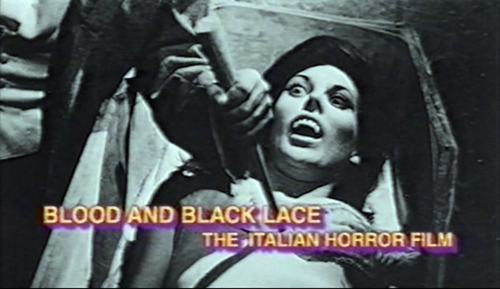
It’s a great little foray into this genre. An eye-popping credit sequence, much in the style of those classic animation stand high color openings of Italian yesteryear, then great clips intercut with insightful interviews. There are wonderful comments by Antonio Margheriti, Erika Blanc, Luigi Cozzi, Orchedia de Santis to name just a few, but Michel Lemoine’s words about the creative process and what he learned from Bava were the most inspirational.
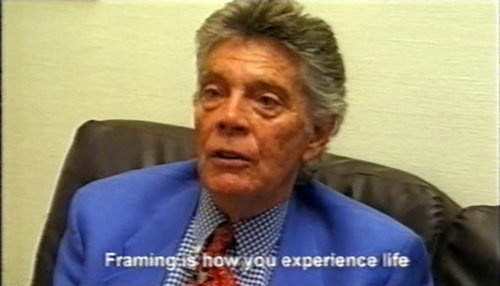
Michel Lemoine
Beautifully made by Andy Starke and Pete Toombs, this documentary left me hungry to see the rest of the series, which I will order ASAP. Some of the other titles are:Virgins And Vampires regarding the films of Jean Rollin, Diabolical Mr. Franco, focusing on Jesus Franco, Blood And Sand looking at Spanish horror, and one I really want to see The Blood Beast, The Films Of Michael Reeves, this is the guy who made Witchfinder General with Vincent Price, a brutal indictment of the abuses of power by an evil Inquisitor. Reeves died under mysterious circumstances at the tender age of 26. He’s a favorite of Quentin Tarantino and I believe Pete Toombs wrote a book about him which I also want to check out. So fans of Euro Genre Cinema, Rejoice! And track down this incredible series, The Eurotika team is also distributing films so check out their recommendations, you won’t be disappointed!
Posted in Actors, Books, Directors, Italian horror | 2 Responses »
Written by Joe D on April 6th, 2008

All you would be directors out there, listen up! Check out Heaven & Hell To Play with- The Filming Of Night Of The Hunter. It’s a great book by Preston Neal Jones, written after years of painstaking research. It documents the creation of Charles Laughton’s only directorial effort. ( In Motion Pictures) through the voices of all the major players and through watching the recently unearthed outtakes at UCLA’s film preservation department with Robert Gitt. Let me say here and now that I love this movie. I grew up watching it on television and it was very influential to me. So if you haven’t seen it, go rent it now! Then read this book, it is not only inspirational, it also shows in great detail what goes into directing a film! What’s important! Laughton, a great actor and a great communicator got so much from his cast and crew by his way of working with them. He surrounded himself with talented people and inspired them to do ( in many cases) their greatest work. That’s a director’s primary job! Hats off to Mr. Jones for this great work, a real service to the Film Community. Also I’m looking forward to watching Mr. Gitt’s documentary on Night Of The Hunter made from the aforementioned outtakes.
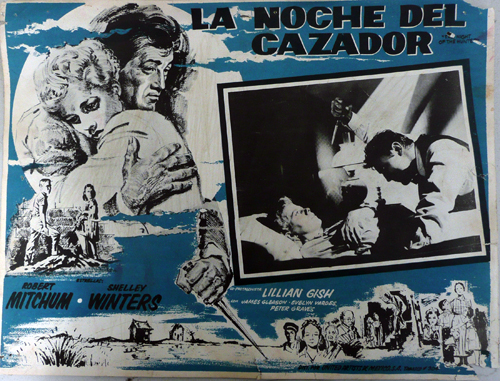
Mexican Lobby Card from the Original Release, part of My Collection of Cool Film Stuff
Posted in Books | 5 Responses »
Written by Joe D on January 17th, 2008

I picked up a copy of Peter McCurtin’s 1970 pulp novel Mafioso. This is the book Fernando Di Leo adapted for his 1973 film Il Boss(USA Wipeout). The main reason I got it was to see if the story continued beyond the ending of Il Boss, because at the end of Il Boss, there’s a title that says CONTINUA (to be continued).

I figured the story in the book must go on for a while to a conclusion. But I found out, although it has a different ending, the film actually has a few more scenes than the novel. Let’s start at the beginning. Nick Lanzetta (Henry Silva in the movie) is a rising star, ultra cold blooded killer, his first hit, blowing up a rival gang in a movie theater with a grenade launcher fired from the projection booth, is lifted right out of the book, the main difference being in the movie the Don and his cohorts are watching a porno film, in the book a gangster film. By the way the book takes place in Brooklyn and the author uses a lot of real locations, I lived there for a while and could easily picture where things were happening, the movie takes place in Sicily. The other main differences are, the head of the rival gang is a black guy named Coakley, in the movie he’s an Italian named Cocchi. Don Corrassco (Richard Conte in the movie) does not want to make peace with the rival gang because they’re not Sicilian, in the book because they’re black. In the movie the corrupt cop (Gianni Garko) wants to maintain order in the mafia that’s why he helps them, sort of a proto-fascist. In the book the corrupt cop is an old Irish guy, he’s just looking for some extra money.
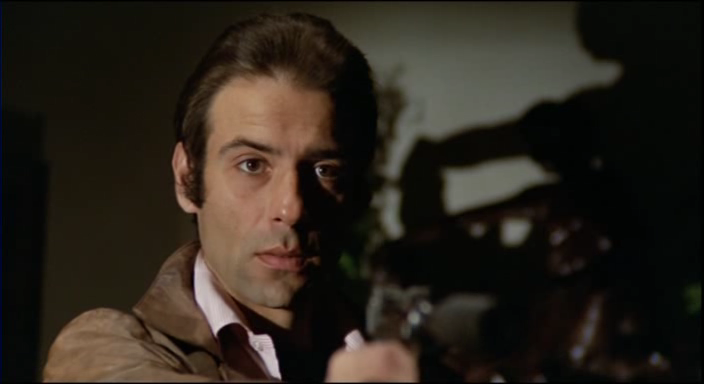
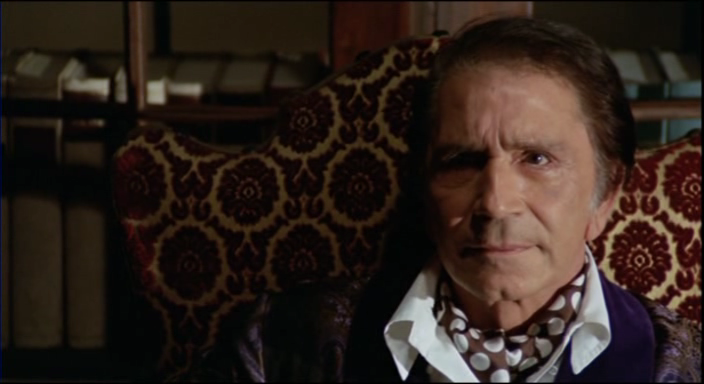
Pignataro Kills Don Corrassco. This is where the film really differs from the novel and for my money the film’s ending is vastly superior.
The main differences are at the end. In the book Lanzetta and his lieutenant, Pignataro recruit the other gang members and do a air/ sea assault on the Don’s Long Island compound. It’s the worst thing in the book. Di Leo’s denouement is far superior. Then Di Leo goes one step further, he has Pignataro try to kill Lanzetta, egged on by the lawyer who seems to represent the Pope! In the book Lanzetta and his men kill Don Corrassco and Lanzetta assumes control of Corrassco’s family. I think Di Leo found this unbelievable to an Italian audience. In America you can fight your way to the top of the heap, a guy starting out with nothing can become rich and powerful. In Italy with all the centuries of family history, it’s much more difficult to jump above your station. Case in point, when I was in Rome I met a lot of up and coming directors. A few complained to me that they couldn’t get their films produced while their contemporaries, whose families had been in the film business for generations got theirs produced right away. It’s just the way it is. Also I was surprised at how similar the scenes between Lanzetta and Daniello’s daughter Kate were. The arguments they have while shacked up in Lanzetta’s apartment are almost verbatim in the film and they’re great.
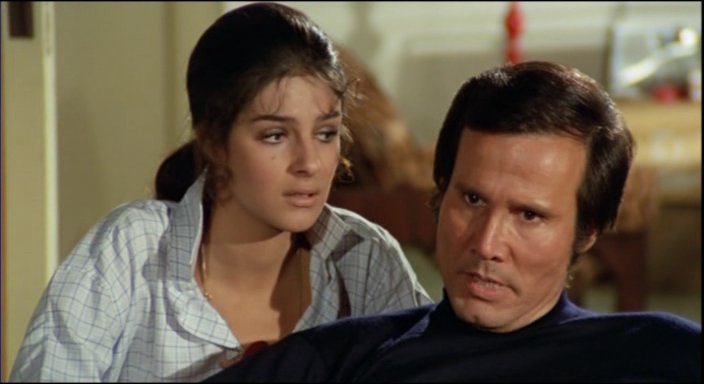
Silva and the Dead Don’s Daughter
Great Art often comes from transplanting an idea from one culture to another and back again. This is an interesting study in cross cultural fertilization. Comparing the film and the novel was fascinating and I recommend the book to any fan of the film.
Posted in Books, Directors, Poliziotto, Writers | No Responses »










